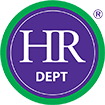You may have heard in the news (or felt in your business!) that sickness absence in the UK has hit a record high.
Office for National Statistics figures have been released for 2022 which show that 185.6 million days were unproductive due to people being off sick. Looking at it another way, that is 2.6% of all working days.
With many businesses already experiencing difficulties in recruitment and retention since the pandemic, further pressures like this on workforces are most unwelcome.
If you are experiencing high levels of sickness absence, the good news is that there are a number of HR measures and initiatives you can explore to counter the problem.
Your sickness absence policy
Every business should have a sickness absence policy. It communicates to staff what they should do if they feel too unwell to work, tells them whether or not they will get paid and at what rate, what certification is required, what happens when they return to work and how the company will handle repeated or long-term absence.
Robust measures which we would recommend include:
- Ensuring that staff telephone personally to say they are ill (not text or email) and how long they expect to be absent.
- Letting the company know of any meetings or important deadlines.
- Continuing to update the company on a regular basis.
- Conducting return-to-work interviews when they are back at work.
These discourage spurious claims of sickness by making the act of taking sick leave very visible, and showing staff that it is actively monitored – fine if they are ill, but less easy or comfortable to throw a sickie.
Ongoing monitoring of attendance
Recording all absences is a must (you’ll find software like our HR Toolkit perfect for this). It allows you to track the attendance of individual employees and check for patterns of absence if you deem it necessary. This could be, say, to confirm a suspicion that someone is taking a disproportionate number of Mondays or Fridays off, and is not, in fact, ill.
Lots of minor absence can be more serious for your business than a prolonged sickness. One model you could adopt to help inform your evaluation of absence in your workforce is The Bradford Factor. This is a calculation which highlights the impact of the number of instances of absence, rather than overall length of absence, in a 52-week period.
By monitoring absence, you will acquire the evidence you need to make good decisions: thus supporting your employees where required and, in other circumstances, if necessary enforcing your company policies on absenteeism. Remember to make allowances for someone with a disability related illness.
A skills matrix
This is a tool you could consider for managing the impact of absence rather than absence levels themselves. A skills matrix maps each employee against the skills and capabilities needed in your business.
It has broader uses than just managing absence, but it will show you if particular services are vulnerable to someone being off sick. If you know that, you can build contingencies in advance, for instance training other people in core skills or having freelancers available, should one person’s absence leave you critically short.
Health and safety
The number one cause of absences was minor illnesses, like coughs and colds. There’s not much you can do about them, but it may prove to be a one-off problem caused by the relaxation of social distancing requirements in 2022, post pandemic.
Musculoskeletal problems account for just over 10% of absence, and mental health about 8%. Together they represent almost one in five absences.
Both of these are conditions that you may be able to manage more effectively within your health and safety obligations. Actions like reviewing staff workstations, particularly for those working from home, to ensure they are suitable; and checking workflows and workloads to ensure they are not too burdensome may help.
More help with sickness absence
If you are really struggling with sickness absence in your business and need professional help to understand and deal with the problem, or simply want to beef up your processes, please contact your local HR Dept office. Or, for health and safety advice, visit our sister company The HS Dept.
